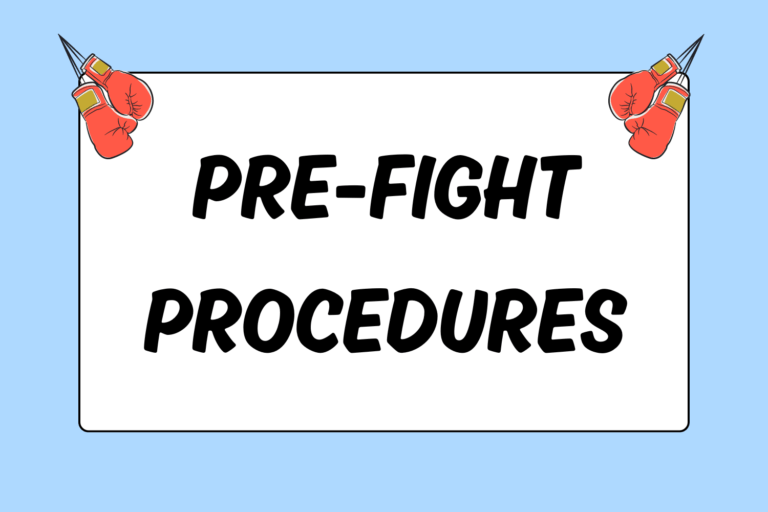Boxing is a combat sport, and combat sports can lead to injuries. To the untrained eye, boxing would appear to be an extremely dangerous sport, but it’s actually safer than many other sports. On a year-to-year basis, more cheerleaders are injured than boxers. Despite being a relatively safe sport to compete in, boxers, like any other athletes, can potentially sustain nominal or serious injuries.
Although serious injuries are rarer than one would imagine, precaution should be taken to prevent any form of injury. This guide discusses common injuries sustained by boxers, and briefly touches on steps that can be taken to limit the possibility of injury.
Injuries
Trained boxers generally suffer fewer injuries than untrained boxers because they know how to effectively protect themselves. Good trainers wait until their boxers can skillfully protect themselves before they allow them to spar or compete. Although experienced fighters can protect themselves better than unskilled boxers, injuries still occur.
The most common injuries among boxers include:
- Cuts and bruises
- Sprains and strains
- Concussion
- Fracture
- Shoulder dislocation
Cuts & Bruises
Cuts and bruises are the most common boxing injuries. These injuries occur from contact with an opponent’s gloves or head.
Cuts are less common in amateur boxing because the fighters wear headgear and their gloves are less tightly wound. Professional boxers experience cuts often, and a deep cut during a pro fight can potentially end the bout.
Cuts should be treated by cleaning the wound with water and applying an antibiotic. During a bout, cuts are filled with petroleum jelly in order to prevent further bleeding.
Bruises are common in both amateur and professional matches. Discoloration of the skin ensues due to damaged blood vessels beneath the skin. A “black eye” is a prime example of a common bruise experienced by boxers.
Bruises need time to heal. Inflammation can be lessened and pain can be numbed by applying ice to the bruised area.
Fun Fact:
Punches to the kidneys are illegal at all levels of boxing. This rule was set in place in order to protect boxers from the severe damage that a kidney punch can cause. A heavy blow to the kidney can decrease absorption of necessities like glucose and amino acids. Several blows to this area can cause kidney failure.
Sprains & Strains
A sprain is an injury involving ligaments – the thick tissues connecting bones to other bones. Conversely, an injury to a muscle or tendon is known as a strain. Tendons are tissues connecting muscles to bones. A strain is referred to colloquially as a “pulled muscle.”
Ankle and wrist sprains are most common for boxers. Pain, swelling, and discoloration are all symptoms of a sprain.
Bicep, elbow, and back strains are the most common types. These injuries occur due to over-stretching while engaging in a quick movement. Symptoms of strains include localized pain and stiffness.
Tendonitis is a severe, acute strain that occurs from overuse. The tendons become inflamed and movement involving the tendon is painful. Swelling often accompanies the pain. Tendonitis usually occurs in areas where blood supply is limited, allowing tissues to be easily damaged. A lack of blood supply in these areas prevents oxygen and nutrients from reaching the tendon, preventing swift recovery.
The best treatment for sprains and strains is the R.I.C.E. (rest, ice, compression, and elevation) method.
Concussion
Concussions occur in all contact sports, and the long-term repercussions of concussions are heavily debated. The injury occurs due to heavy impact to the head. The impact shakes the brain within the skull and causes the brain to act abnormally for a brief period of time.
Some symptoms of concussions include:
- Unconsciousness
- Brief loss of short-term memory
- Nausea
- Loss of coordination
- Confusion
- Headache
When a boxer experiences a concussion, he should see a doctor who will diagnose the severity. The only treatment known for concussions is rest. Although a boxer may feel fine a day or two after a concussion, he should generally take two weeks off to allow the brain to fully heal.
Bone Fracture
A bone fracture is also known as a bone break. The most common boxing fractures involve the:
- Nose
- Hand
- Jaw
- Ribs
Fractures involving certain parts of the hand, known as the metacarpal bones, are so common among professional boxers that doctors often refer to these fractures as “boxer’s fractures.” The metacarpal bones connect the fingers to the wrist and can be displaced with severe impact.
Any form of a fracture calls for a trip to the hospital in order to properly diagnose and treat the break.
Shoulder Dislocation
Boxers sometimes dislocate their shoulders due to improper form or an over-exaggerated movement. A shoulder dislocation occurs when the humerus bone separates from the Scapula bone at the shoulder joint. A dislocated shoulder can be extremely painful. This injury is usually visible due to the boxer’s dangling arm and inability to move the arm from its current position.
A dislocated shoulder is usually treated with a splint that keeps the shoulder in place and allows it to heal. A severe dislocation or multiple dislocations sometimes call for surgery in order to repair damage to the tissues surrounding the shoulder joint.
Fun Fact:
Professional boxing is banned in several countries including: Norway, Iceland, Cuba, Iran, and North Korea. Despite the fact that various sports are far more dangerous, the physicality of the sport is frowned upon in certain cultures.
General Preventive Measures
Boxers can use preventative measures to limit the possibility of potential injury, such as:
- Protective Equipment: Headgear, no-foul protector cup, mouthpiece, hand wraps and gloves weighing at least 16 ounces should be worn during all sparring sessions.
- Petroleum Jelly: Covers a boxer’s face so that punches slide off upon contact.
- Ice: Decreases inflammation and soreness after a workout, thus preventing further injury.
- Rest: The number one recovery tool for healing.
- Stretching: Should be incorporated at the beginning and end of workouts.
- Conditioning: Fatigue and injury have a strong relationship. A well-conditioned boxer is less likely to suffer an injury.
- Defense: From an injury standpoint, boxers must be able to protect themselves in the ring.
Listen to the Body
In many cases, injuries occur due to a lack of judgment. Injuries almost always arise when the preventative measures above are disregarded. Chronic injuries develop from overuse and the failure to identify when an injury initially occurred, so it’s critical for all athletes, including boxers, to pay attention and act responsibly. Preventative measures and proper injury treatment are as important to a boxer’s training as sparring and hitting the heavy bag.





